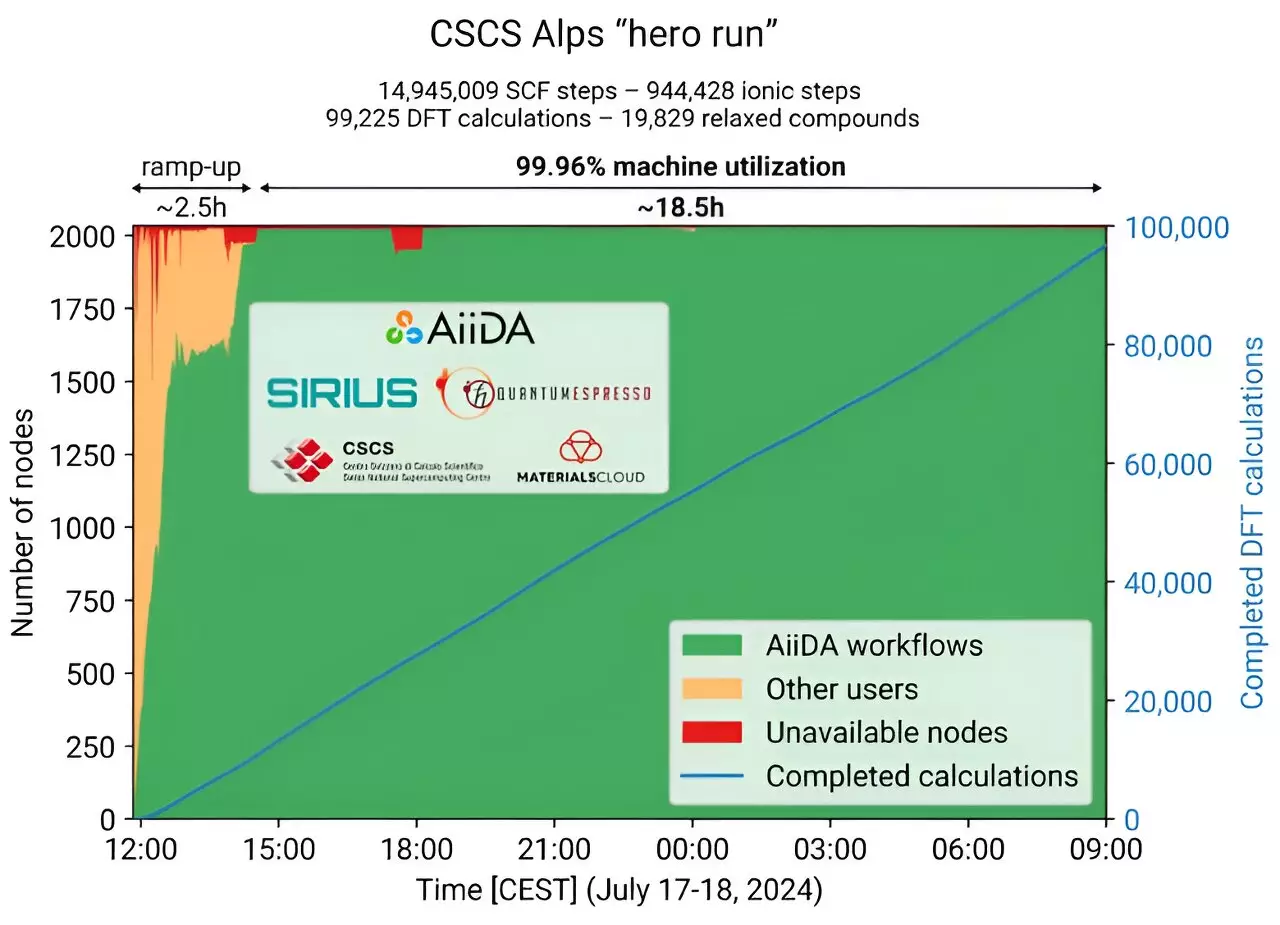On July 17 and 18, 2024, a team of scientists from the Swiss National Center of Competence in Research NCCR MARVEL embarked on an ambitious computational journey that highlights the incredible potential of the newly inaugurated Alps supercomputer. With an operational launch celebrated on September 14, 2024, Alps stands as one of the most advanced supercomputers globally, managed by the Swiss National Supercomputing Center (CSCS). This endeavor showcases not just the hardware’s prowess, but also the advanced Swiss-developed software tools that are redefining computational materials science.
A critical element of this endeavor was the collaborative effort led by Giovanni Pizzi’s research group from the Laboratory for Materials Simulation (LMS) at the Paul Scherrer Institute (PSI), under the stewardship of Nicola Marzari. The group set out to demonstrate the capabilities of AiiDA, an open-source framework designed to automate complex computational tasks in materials science. The goal of this “hero run” was to exploit the full potential of the Alps supercomputer for high-throughput calculations, assessing a plethora of material structures to identify promising candidates for applications like next-generation batteries.
The mechanics underlying this monumental task involved intricate planning and real-time execution. During the hero run, the scientists managed to utilize a geo-distributed infrastructure predominantly anchored in the Lugano data center to execute thousands of calculations in parallel. The team, comprised of Marnik Bercx, Michail Minotakis, and Timo Reents, skillfully orchestrated the processes remotely, leveraging AiiDA to prepare input files while the actual intensive computations ran on a sophisticated variant of Quantum ESPRESSO—the widely used computational code for simulating material properties.
Utilization of the Sirius library, a product of NCCR MARVEL, played a pivotal role in optimizing the processing capabilities of the Alps supercomputer’s GPUs. The integration of novel algorithms into the computational framework significantly enhanced the success rate of simulations—a key consideration in the high-dimensional landscapes of material properties.
With the CSCS team’s go-ahead at noon on July 17, the collaborators unleashed their computational experiment on an impressive array of 2,033 NVIDIA Grace Hopper nodes—boasting over 8,132 GPUs and 585,504 CPU cores. AiiDA seamlessly managed the submission and execution of jobs, ensuring that calculations were conducted without interruption, even allowing the researchers a brief respite during the night.
Around 3 AM, while the scientists caught some much-needed sleep, AiiDA continued its tireless work, submitting new jobs and tracking their progress. By the end of the run around 9 AM on July 18, the team achieved an extraordinary level of utilization—99.96% of the Alps system’s capacity. Such efficiency underscores the technological advancements within both the supercomputing hardware and the software that enables researchers to harness its full potential.
The marathon yielded remarkable results: nearly 100,000 calculations were completed in a mere 16-hour window, examining the properties of a diverse array of 20,000 crystal structures. The choice of medium-sized atomic structures maximized the computation efficiency of the powerful Alps machine, indicating the sophisticated strategies in material selection that drive forward computational materials science.
Beyond the immediate results, the study aimed to reassess electronic properties, magnetic characteristics, and geometric configurations while also validating new pseudopotentials within their existing datasets. These findings are set to be published as FAIR data, contributing significantly to the Materials Cloud platform, an essential resource within the NCCR MARVEL initiative.
The success of this computational marathon is not just a testament to the capabilities of advanced supercomputing; it serves as a pivotal moment for materials discovery. By demonstrating AiiDA’s ability to efficiently manage exascale computations, this project lays the groundwork for future innovations in fields ranging from energy storage to material development. The Alps supercomputer, along with tools like AiiDA, equips researchers with unprecedented resources to navigate the complexities of material properties, ushering in a new era of scientific exploration.
The collaboration between cutting-edge computing resources and sophisticated software illustrates an exciting trajectory for materials science. As we continue to uncover new materials through these powerful computational techniques, the potential for breakthroughs in technology and industry remains boundless.


Leave a Reply